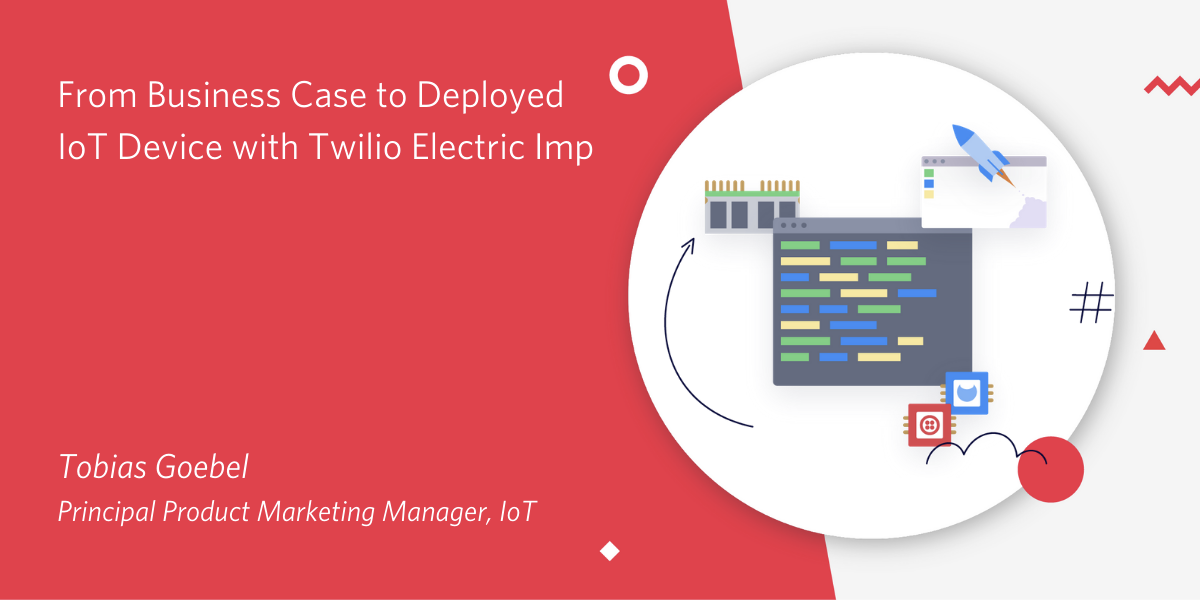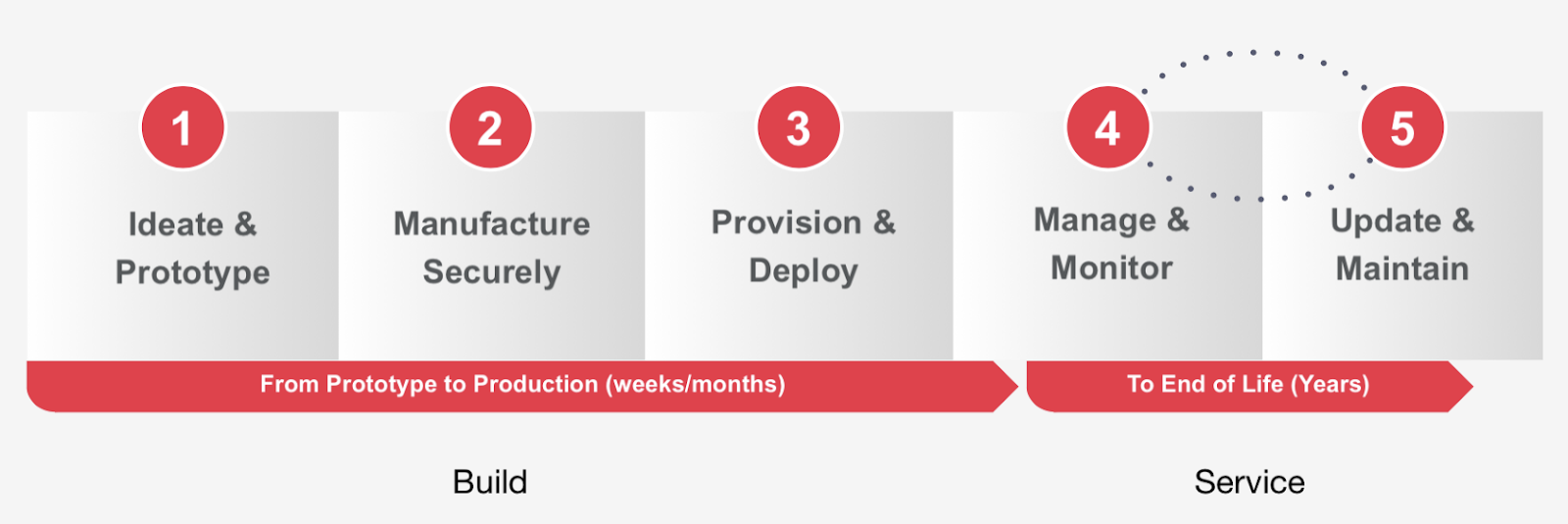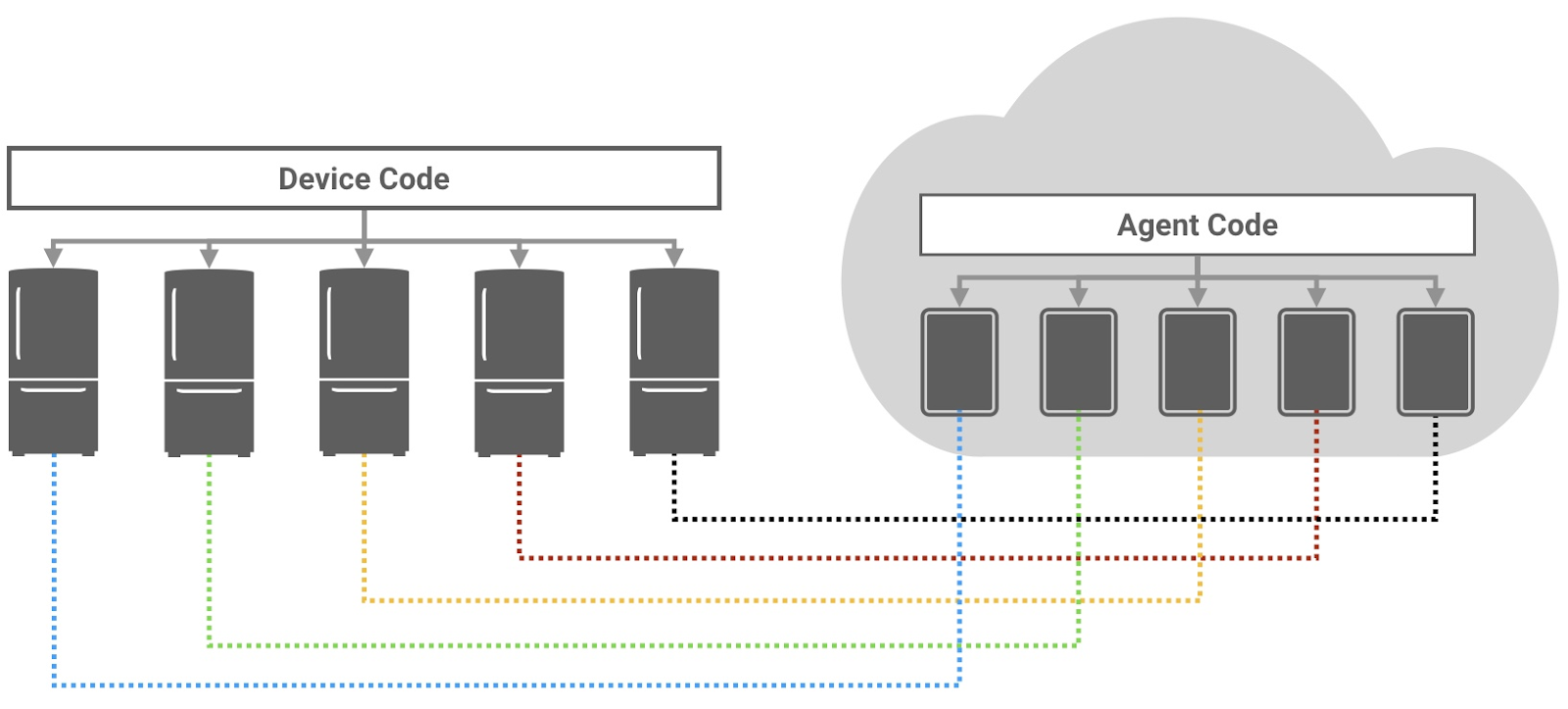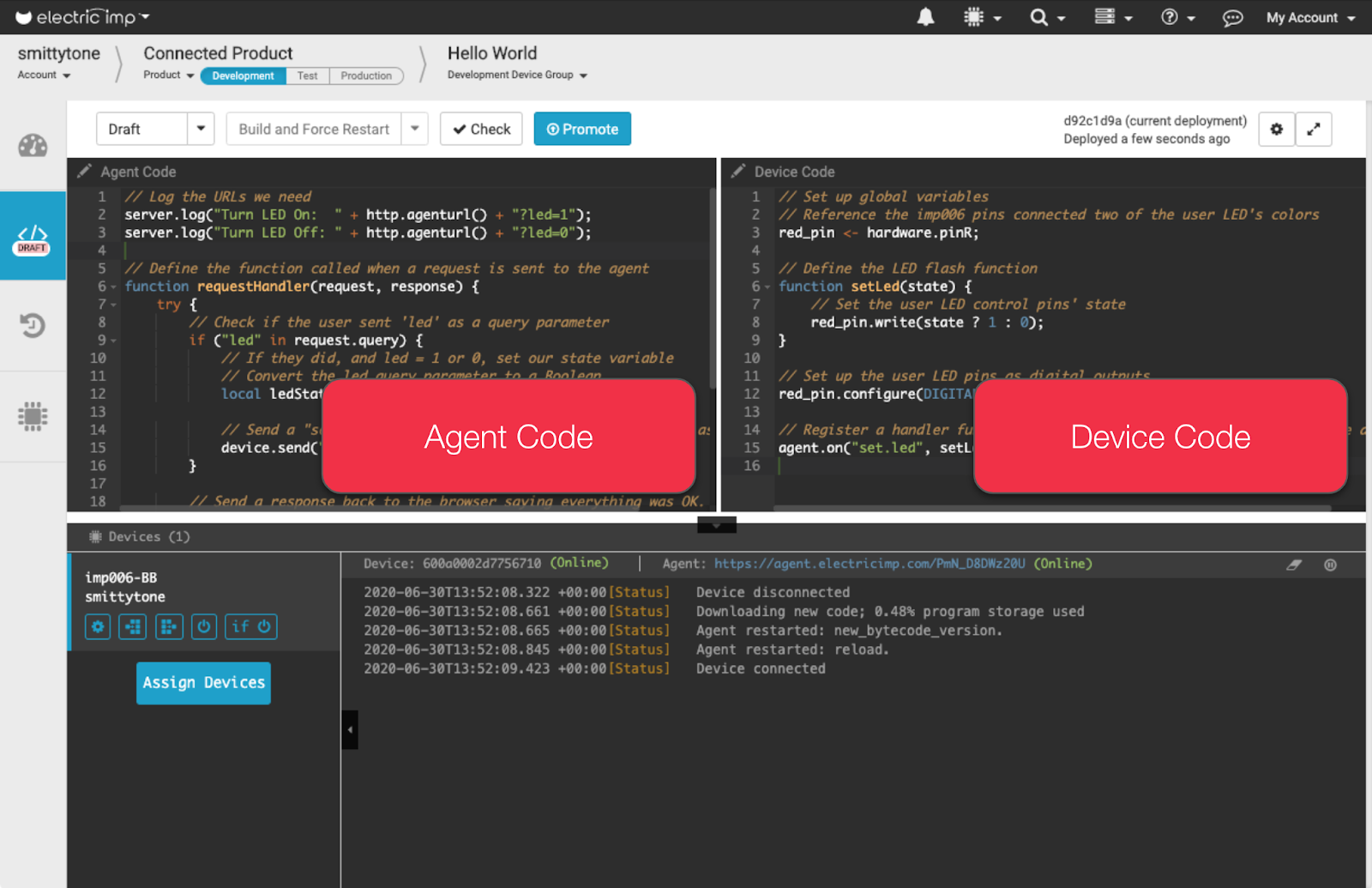From Business Case to Deployed IoT Device with Twilio Electric Imp
Time to read:
This post is part of Twilio’s archive and may contain outdated information. We’re always building something new, so be sure to check out our latest posts for the most up-to-date insights.

So – you have an idea for building a connected device, which would let you tap into the promises of the Internet of Things. Maybe you’ve worked out a business case, showing how the investment of building the required infrastructure to maintain your device will be counteracted by the benefits expected from being able to collect usage data and control the physical asset. Whatever the case, chances are you’ve underestimated what it takes to build and maintain IoT devices and make everything reliable enough to serve your business properly.
Twilio’s decades of collective experience helping companies bring IoT products to market unfortunately show us that too many businesses simply fail their business case: it takes them years – not months – to establish reliable connectivity, and many give up before reaching a return on investment or even a functioning deployment.
In this post, I’ll explain the challenges of IoT, your options to get help with building and deploying connected devices, and how Twilio Electric Imp takes care of the hard problems of IoT – so you can focus on your core business.
The IoT Lifecycle
On the surface, IoT projects look like any other technology project.
As with many product implementation lifecycles, you expect there to be ideation & prototyping phases, including testing, and eventually deployment. Given that IoT is typically about long-lived connectivity, you are also dealing with manage & monitor, and update & maintain phases. Finally, add a manufacturing phase in between, since we are dealing with hardware, not software alone.
So you arrive at this:

However, the devil is in the details. Or rather: the lion’s share of the required work lies beneath the surface and often only appears months into a project.
Whether it’s:
- finding the best connectivity type for your use case and the required hardware modules, and getting the necessary certifications for the use of your chosen radio
- establishing remote communication with your device, potentially even enabling firmware updates over-the-air
- developing a way to commission devices to the field after manufacturing, and securing the manufacturing process so that rogue factories cannot steal IP
- establishing device-to-cloud security (and maintaining that security for years)
- managing keys and certificates,
- …
And the list goes on! And this doesn’t even touch the required knowledge of dealing with hardware in the first place: understanding PCBs, MCUs, power management, interrupt handling, QSPI, UART, ...
At a high level, there are three main areas of work you’ll have to figure out, apart from the hardware aspect:
- Security challenges
- Deployment and integration complexity
- Scalability, reliability, and long-term operations
The 3 ways to tackle an IoT project
So what can you do? You essentially have three choices:
- Build it yourself
- Buy an off-the-shelf solution (if one even exists)
- Build on a platform
Build a connected product yourself
You may decide to build things on your own.
Maybe you have the required expertise in-house – or you think you do –, and are willing to give it a try. From what we have observed over the years, many have taken that route – but few of them succeed, for the above-mentioned reasons. See also: Why do IoT projects fail?
And if you do eventually manage to set everything up so that it works satisfactorily – are you in the business of maintaining connected equipment?
Most likely, the answer is no. You might be capable of doing the work, but it will distract you from focusing on your core business. Furthermore, you likely built a one-off solution to the exact business problem at hand. How will you approach your next connected product project with different requirements (e.g., you now need cellular connectivity as you cannot use the Wi-Fi network that might or might not be in place)? You guessed it – you will have to redo a lot of the work, costing you again and binding even more of your team.
Buy an off-the-shelf IoT solution
Many commodity solutions exist today, providing everything from fleet tracking to predictive maintenance for certain types of machinery – two of the most prominent use cases of IoT.
One logical path might be to buy an IoT product that claims to do what you need. Oftentimes, though, these products fall short in one (or several) areas, leaving you with a suboptimal solution that could miss your estimated ROI. Furthermore, you often face a hidden cost when it comes to integrating the solution into your business ecosystem – even if standard integrations do exist.
Build an IoT solution on top of a platform
Your last option is to choose an IoT platform that takes care of the heavy lifting required to establish reliable IoT infrastructure.
I’d argue that this approach combines the best of both worlds: you get the confidence and fast time-to-market that a ready-made product or solution would give you, but you additionally benefit from the following value propositions:
- Reusability: The ideal platform will support many different use cases. You are essentially laying the foundation for reusability across your company, and for many applications to come.
- Low risk: Platforms guarantee you that whatever you build on them works – with relatively low technical risk. You should also expect a predictable Total Cost of Ownership (TCO).
- Worry-free operations and scale: Running the platform is now the burden of the vendor – which should be their main business, not yours. With the right partner, you will get high uptime, reliable over-the-air (OTA) updates, and security managed for life.
Get your connected device live within months on Twilio Electric Imp
Twilio Electric Imp is such a platform – we call it an IoT Device Builder Platform. Its focus is not data analytics or cloud management, as with so many others. Instead, it takes care of the hardest part of an IoT deployment: achieving reliable, long-lived security and reachability of your devices, including the ability to push OTA code updates.
Electric Imp optimizes for low-power, battery-run applications, which leverage microcontrollers (MCUs) vs. full-powered hardware. At the same time, it integrates with the data platforms of your choice, including pre-existing standard integrations (click Cloud Platforms).
All of this lets you concentrate on interpreting the data that your devices generate instead of burning time ensuring that data flows in the first place.
Secure mass manufacturing of IoT devices
In addition to device connectivity, fleet management, and security managed by Twilio for the lifetime of your devices, Electric Imp helps you with the manufacturing and field provisioning and commissioning process – something often overlooked by vendors that focus on the prototyping phase alone.
Have a look at the following video that touches upon a few of the features of a connected manufacturing process with Electric Imp, which helps you scale from a prototype to thousands or even millions of units:
Field provisioning of consumer IoT devices
Our team has also figured out an efficient way to provision field devices, including steps such as providing connection credentials to devices – think WiFi names and passwords. It’s a patented process called BlinkUp, which uses a light-flashing mechanism to convey data from a mobile app or factory fixture to the end device via an optical sensor.
We provide an SDK to embed BlinkUp into your own mobile app, in addition to offering our own BlinkUp app in the mobile app stores for your testing needs.
Decouple IoT device code from cloud processing
Twilio Electric Imp provides a Web-based device management and coding environment. It lets you decouple the code that runs on your device from the code that you need to integrate into your enterprise cloud (or clouds!).

Decoupling the two types of code is the right call. Since you’re working with microcontrollers with limited power and energy consumption, you don’t want to run compute-heavy operations needed for cloud integration directly on the device.
Electric Imp gives each device an equivalent “agent” in the Twilio cloud where such processing can easily live. Furthermore, the agents can act as “always-on” cloud representatives of the devices, which might only connect intermittently. This allows you to trigger code updates whenever you want – all of the execution is handled by the agents.

Deploying connected devices with Twilio Electric Imp
Twilio Electric Imp is the perfect platform if you have an IoT job that needs to get done – connect a product, and outsource the maintenance and connectivity burden.
Curious to learn more? Talk to a Twilio IoT expert now – or get a free assessment of your existing IoT infrastructure to find out if it could benefit from Electric Imp foundation.
Tobias Goebel has spent the last 16 years in the enterprise software space, with roles spanning engineering, product management, sales engineering, and product marketing. In that first chapter of his career, he worked on defining and evangelizing technology solutions to improve communications with “people” – in the customer service and contact center industry, with a focus on IVR and chatbots. He now works on defining and evangelizing technology solutions to improve communications with “things” – in the IoT space, as a principal product marketing manager for Twilio IoT.
Related Posts
Related Resources
Twilio Docs
From APIs to SDKs to sample apps
API reference documentation, SDKs, helper libraries, quickstarts, and tutorials for your language and platform.
Resource Center
The latest ebooks, industry reports, and webinars
Learn from customer engagement experts to improve your own communication.
Ahoy
Twilio's developer community hub
Best practices, code samples, and inspiration to build communications and digital engagement experiences.